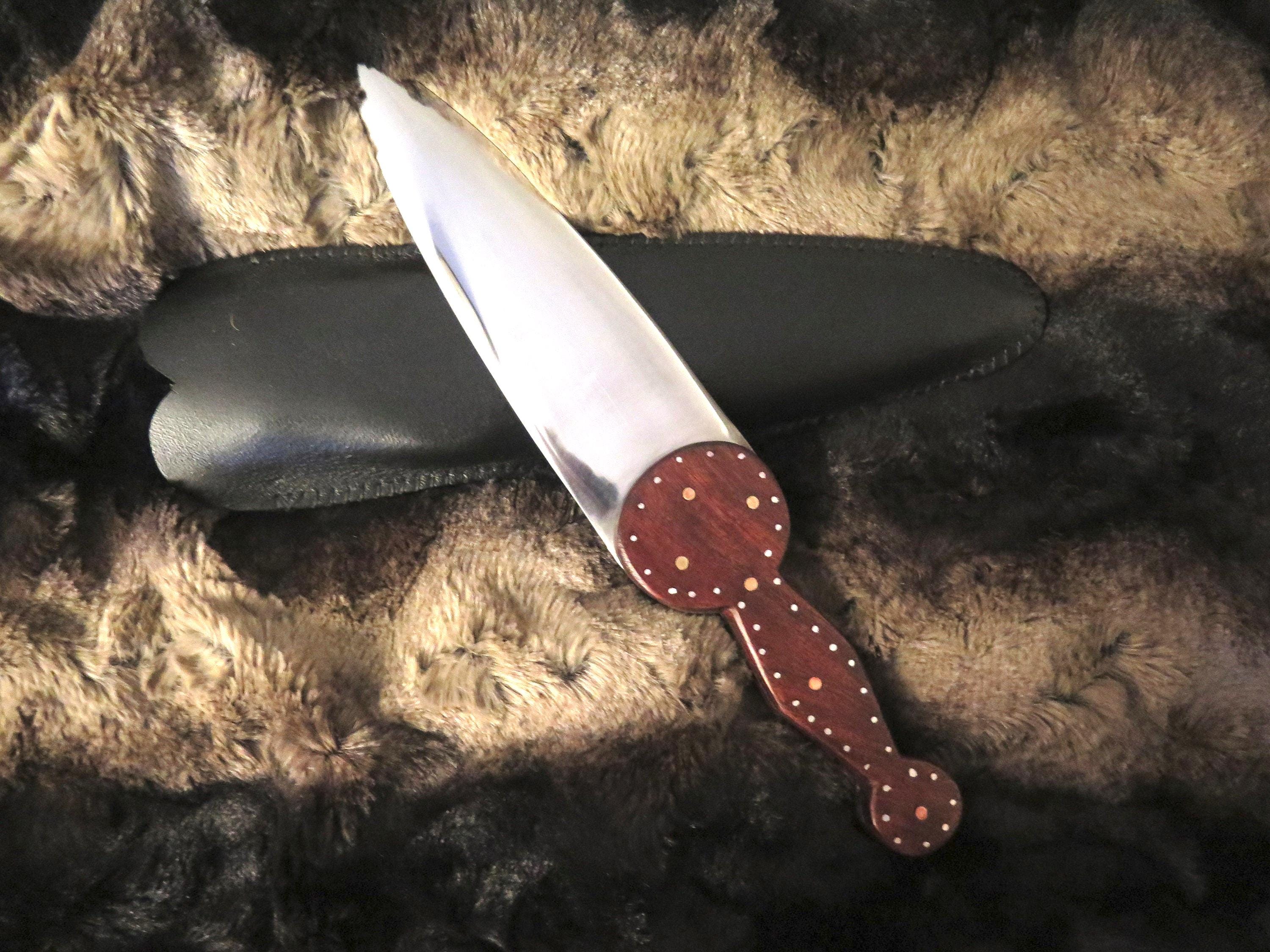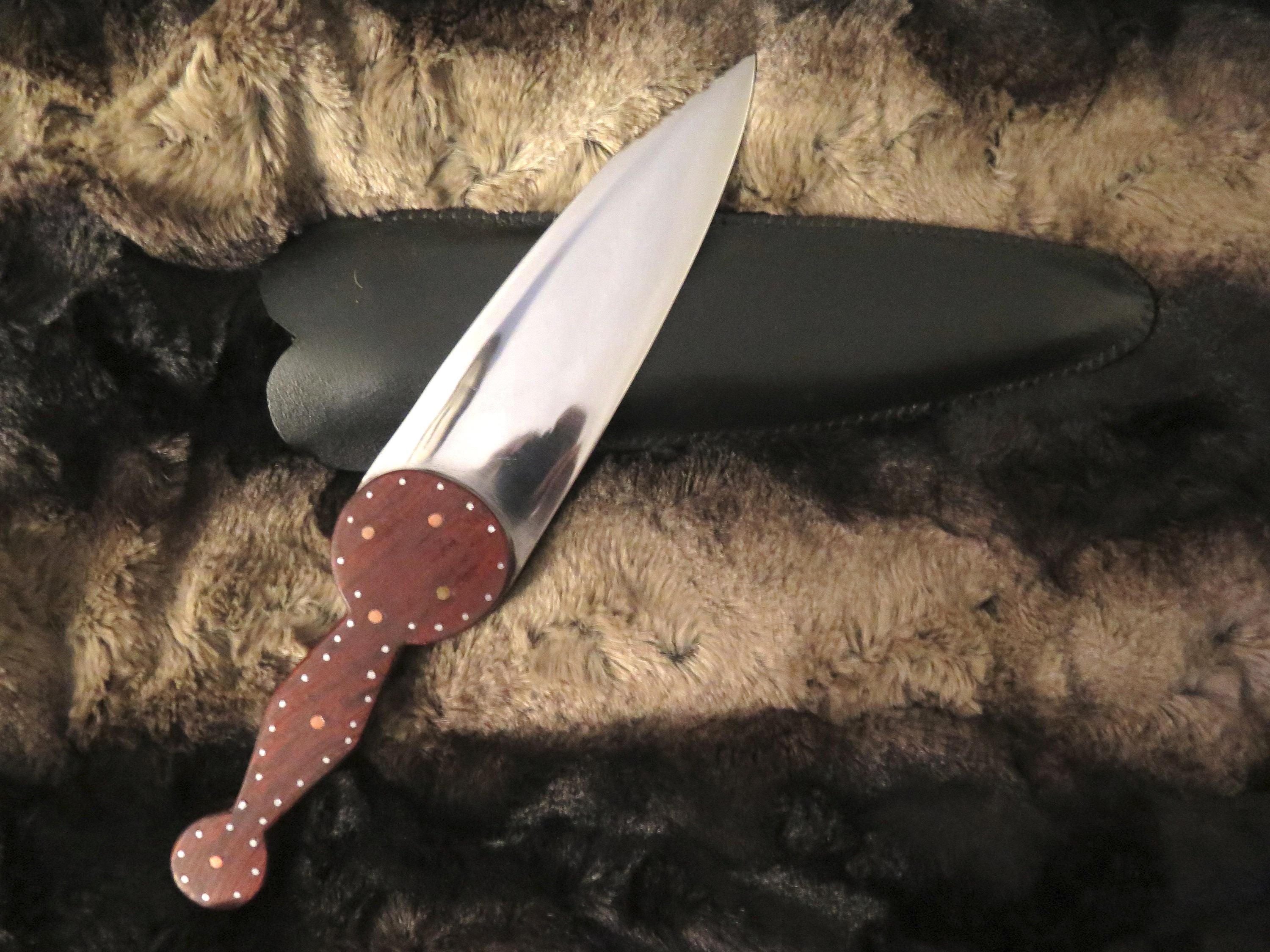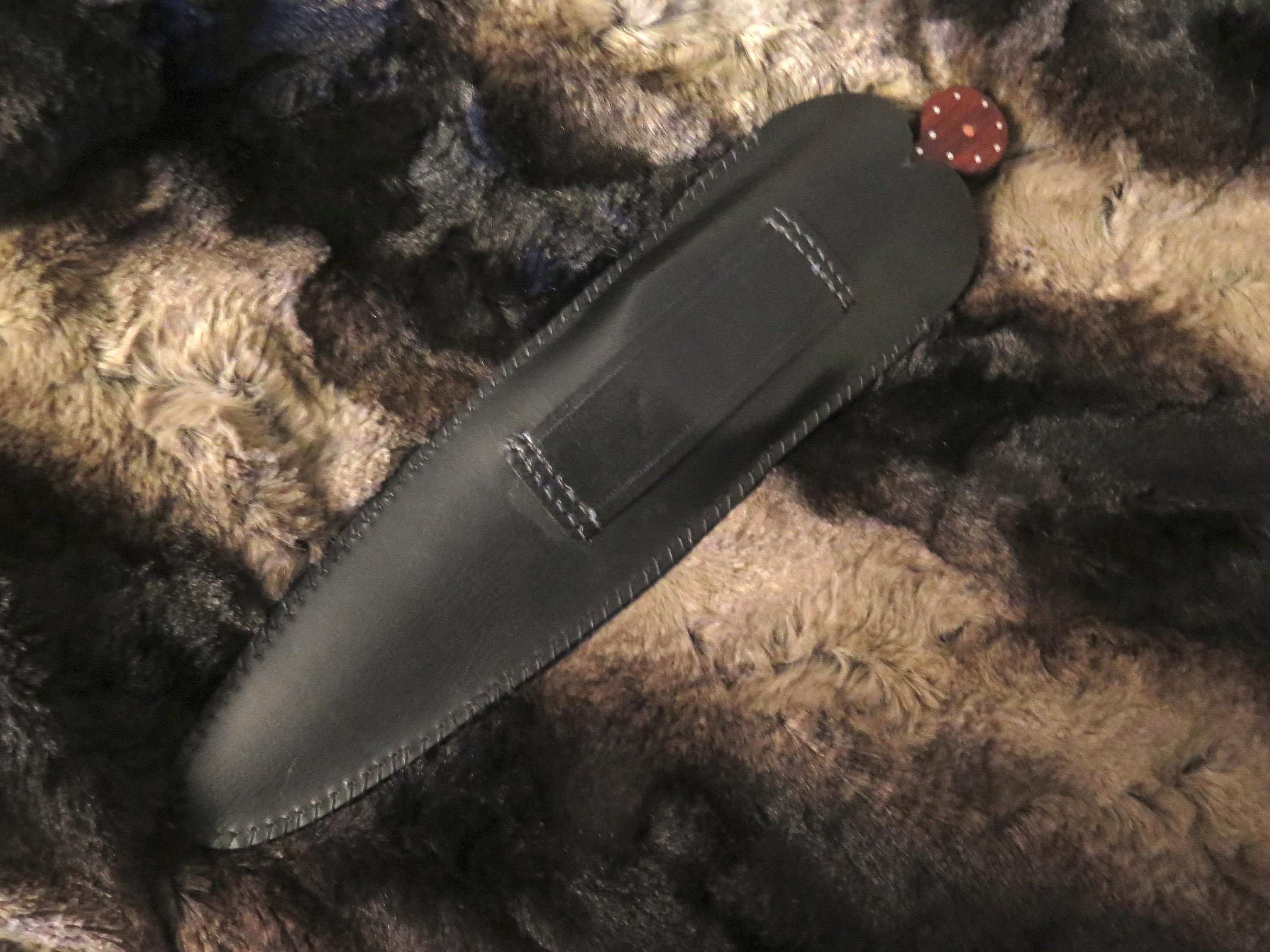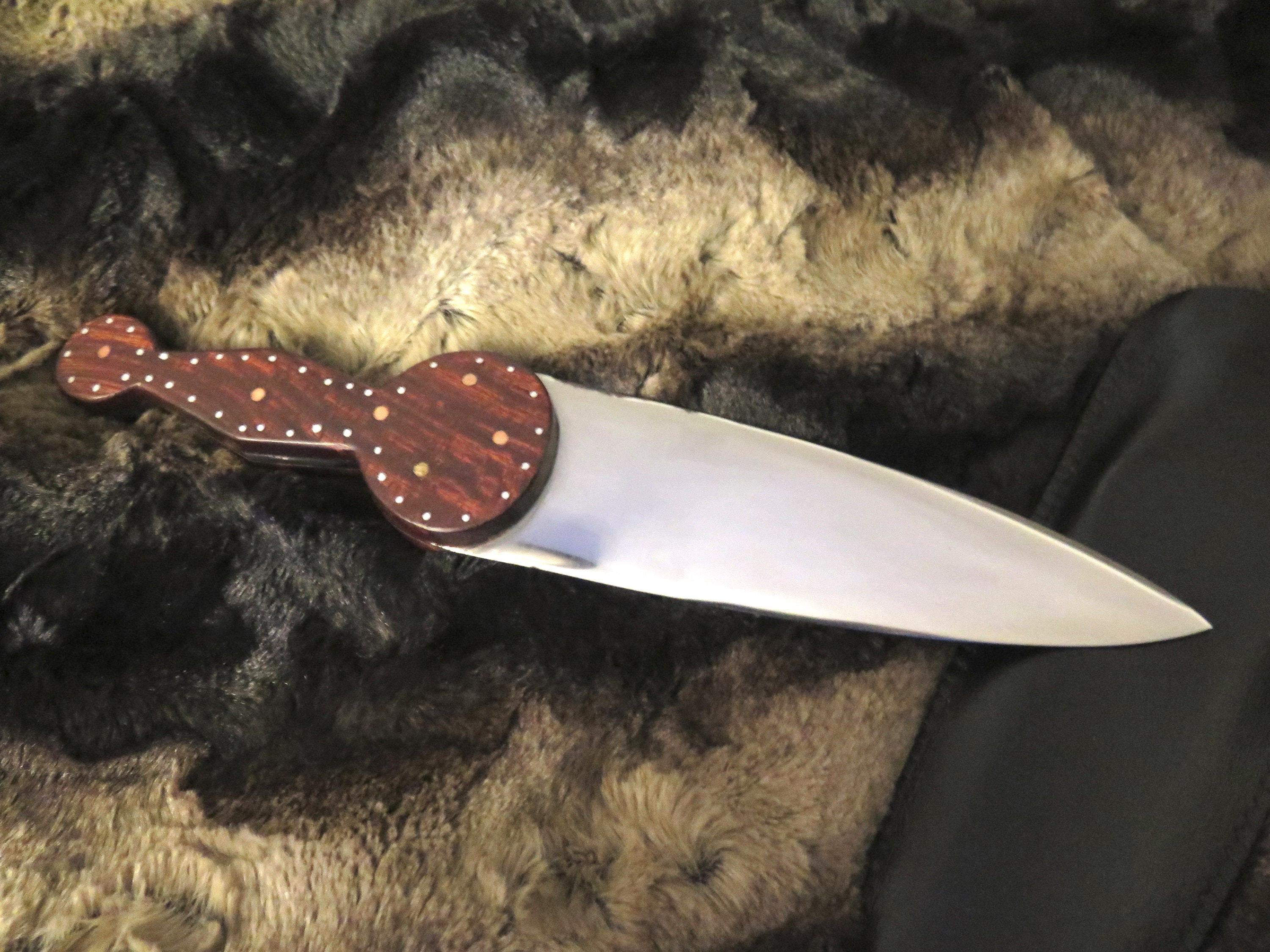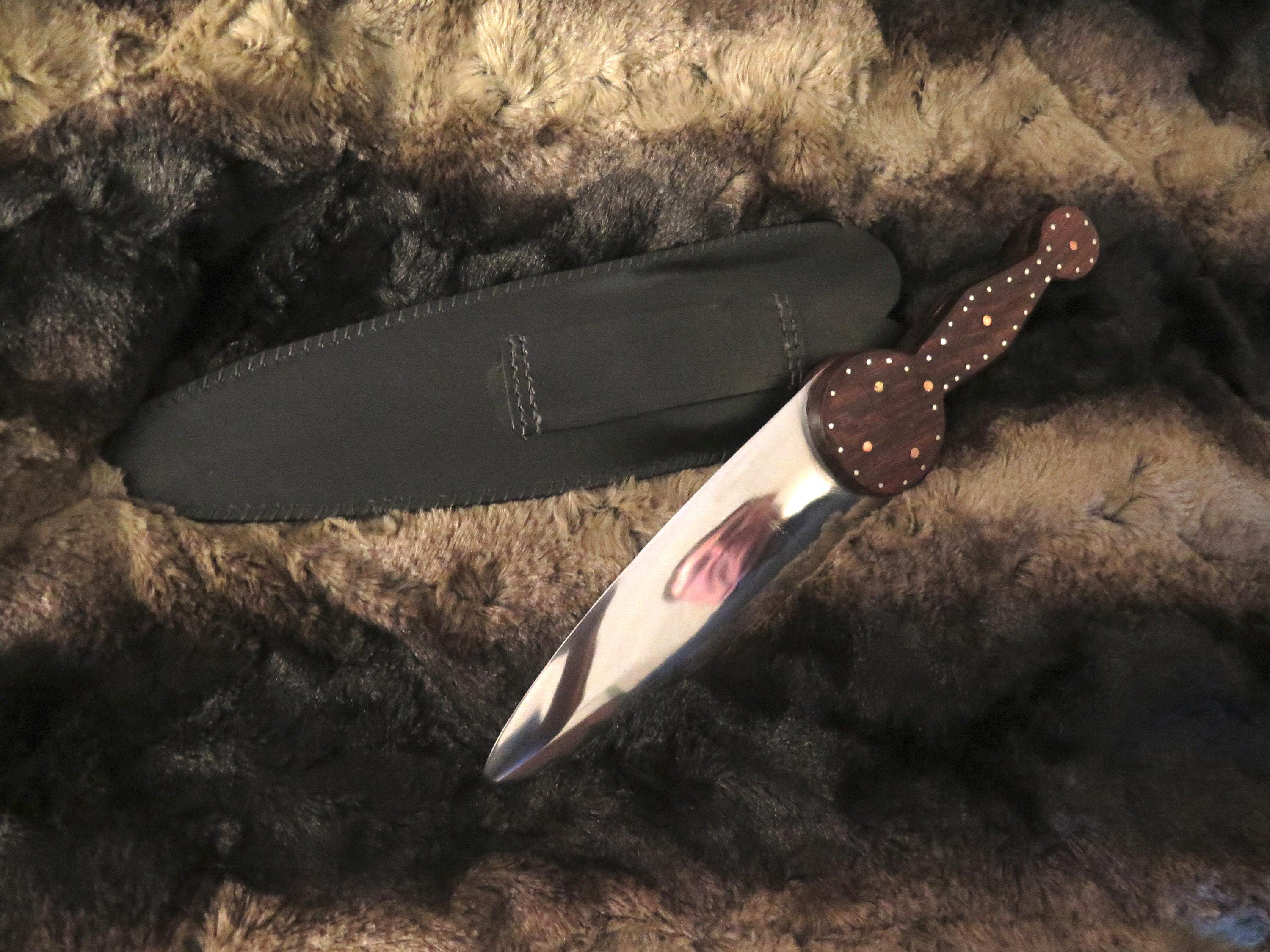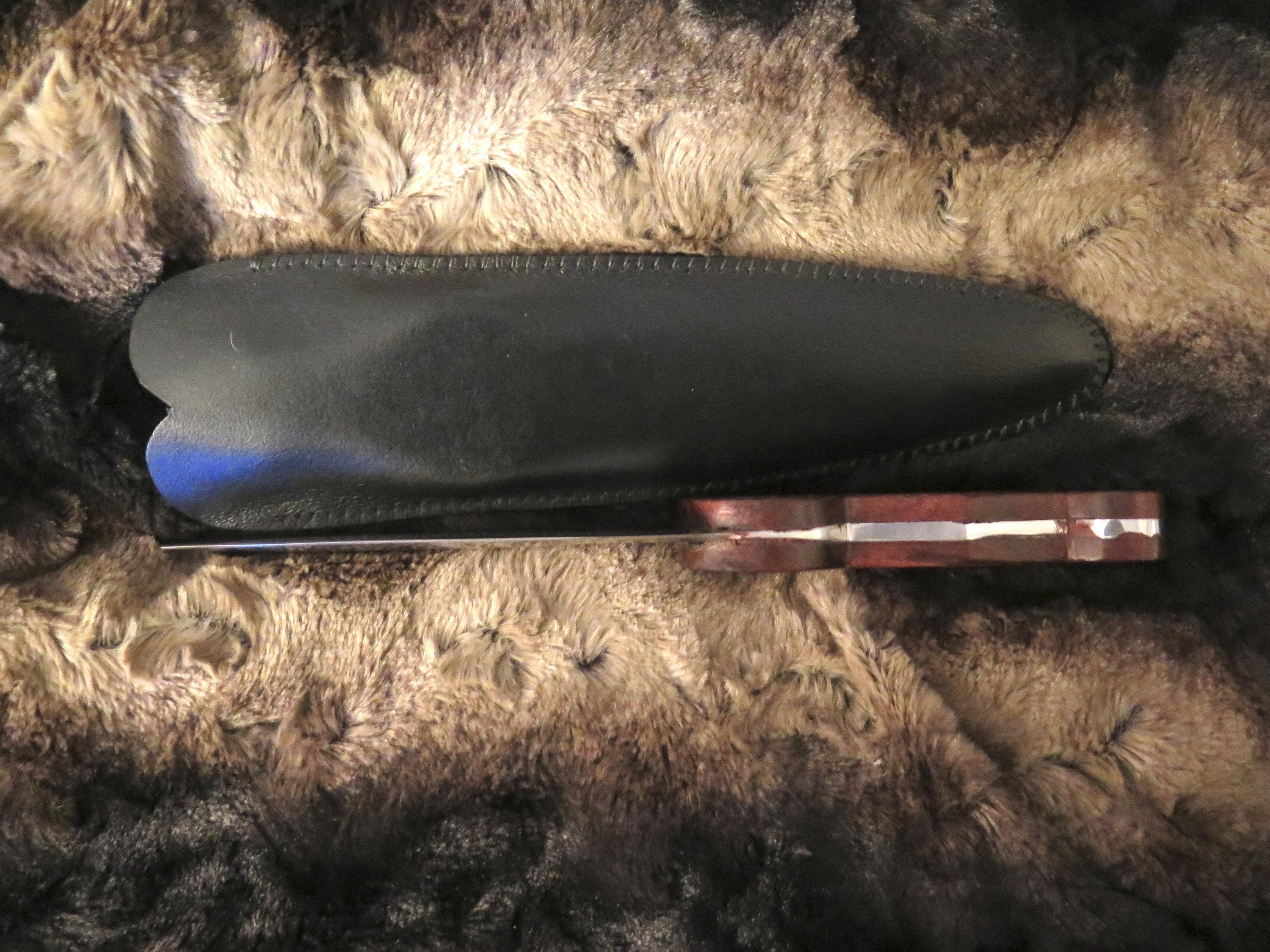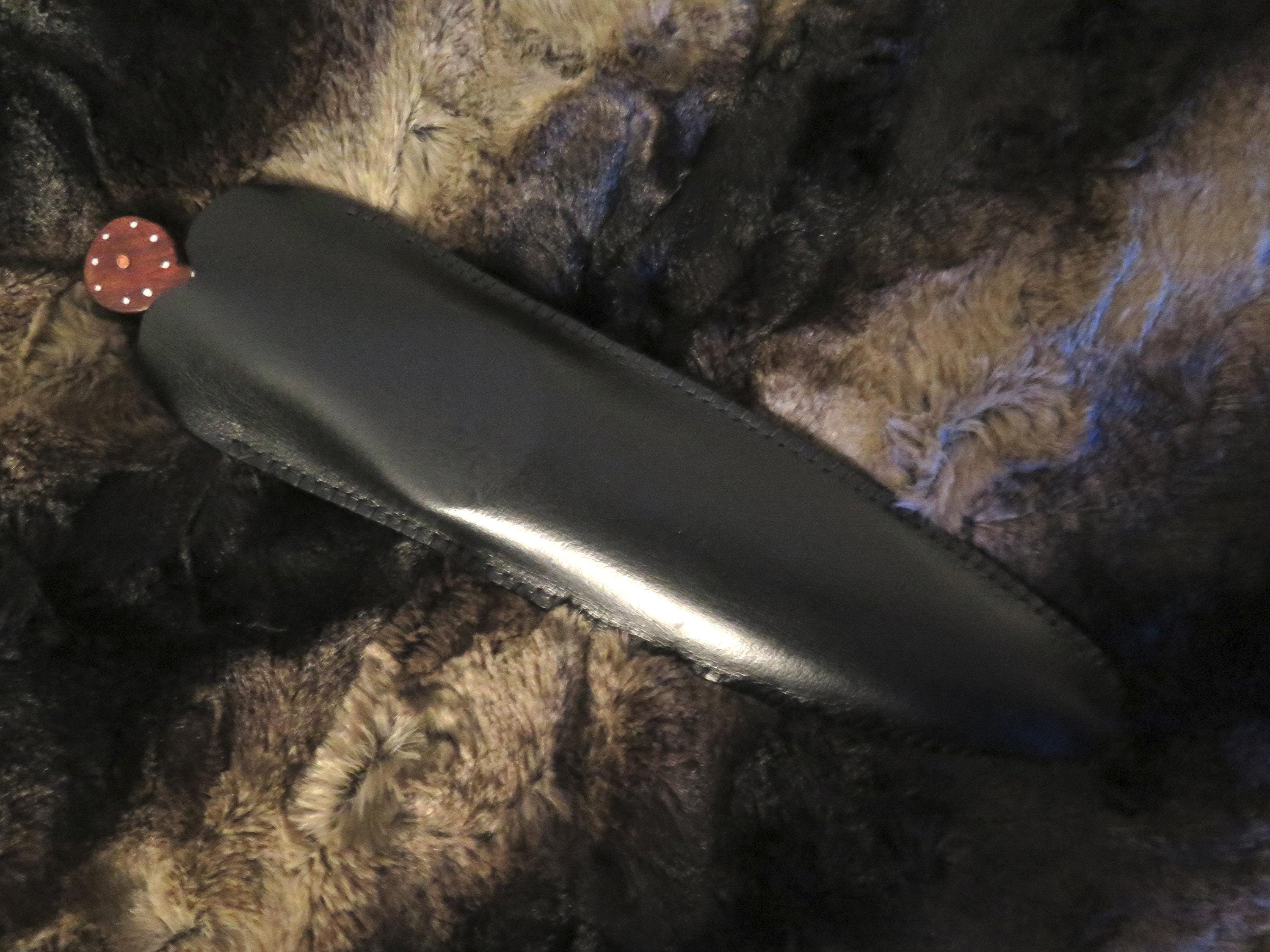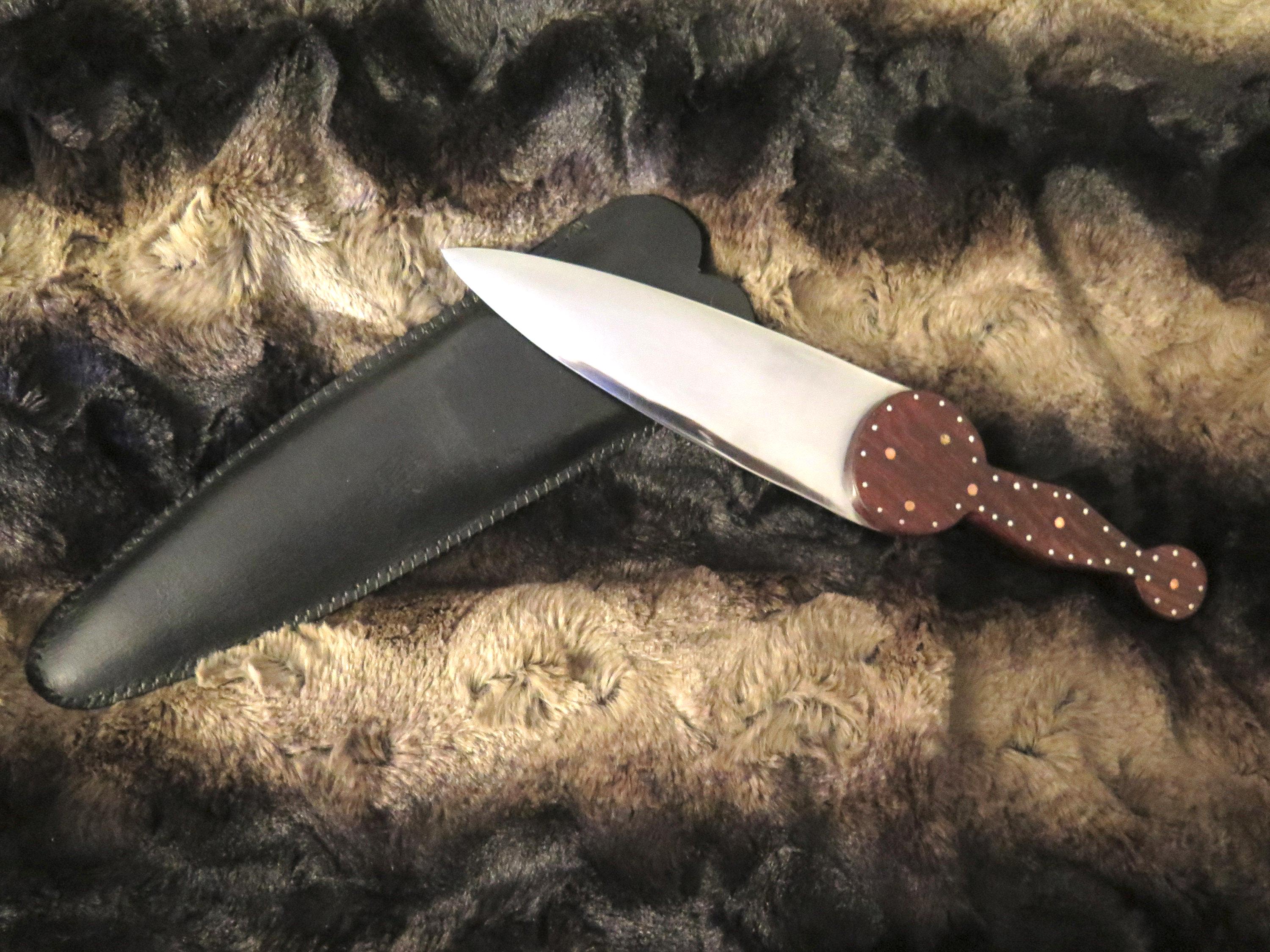Historic Cree Trade Knife: Rosewood Handle, Brass Pins, Custom Sheath
$101.69 $112.99
Product Details
History of the Cree Indian Dagger Knife
The history of the Cree Indian dagger knife, often referred to as a dag knife, is deeply intertwined with the cultural practices and survival needs of the Cree people and other Native American tribes in North America. This type of knife has evolved over centuries, reflecting both indigenous craftsmanship and European influences.
Origins and Early Development
The origins of the Cree dagger knife can be traced back to the early interactions between Native American tribes and European settlers. Initially, Native Americans crafted knives using materials readily available in their environment, such as stone, bone, antler, and wood. The first knives were made from sharpened stones like flint or obsidian, which were effective for hunting and daily tasks.1
As European settlers introduced metalworking techniques in North America during the 17th century, Native American tribes began to adopt iron and steel for their weaponry. This transition marked a significant shift in knife-making practices among tribes like the Cree. The introduction of metal allowed for stronger, more durable blades that could be fashioned into various forms, including daggers.
Characteristics of the Cree Dagger Knife
Cree dag knives are characterized by their distinctive design features that reflect both functionality and artistry. Typically known as “Chief’s Grade” or “Presentation Grade” knives, these daggers were often ornately decorated and presented to tribal leaders during trade negotiations or treaty signings.
A typical Cree dagger knife features:
A forged 7" iron blade with a raised median ridge running down its center.
A handle made from hardwood grips that may include decorative elements such as mother-of-pearl inlays or copper rivets.
An overall length ranging from approximately 12 to 15 inches.
A design that allows for easy wear around the neck or chest, making it accessible during hunting or combat situations.
These daggers were not only practical tools but also symbols of status within the tribe.
Cultural Significance
The Cree dagger knife holds significant cultural importance beyond its utilitarian use. It represents a blend of indigenous traditions and adaptations influenced by European contact. The craftsmanship involved in creating these knives reflects a deep respect for materials sourced from nature and an understanding of their spiritual significance.
Knives like these were often passed down through generations as heirlooms, symbolizing family heritage and identity within the Cree community. They served multiple purposes: as weapons for hunting or defense, tools for daily tasks such as skinning animals or processing food, and ceremonial items used in important tribal events.
Trade and Influence
During the fur trade era in North America (approximately 1600s to 1800s), dag knives became popular trade items among various tribes across regions such as the Great Lakes area extending westward into Northern Plains territories. The Cree people engaged actively with fur traders who supplied them with metal tools in exchange for furs.
This interaction not only facilitated access to better materials but also influenced design elements seen in contemporary daggers today. For instance, many daggers feature designs inspired by European styles while still maintaining traditional indigenous aesthetics.
Modern Context
Today, authentic Cree dagger knives are highly sought after by collectors due to their historical significance and artistic value. Auctions have seen similar pieces sell for substantial amounts—some reaching prices upwards of $75,000—reflecting their rarity and craftsmanship quality.
Contemporary artisans continue to create versions of these traditional knives while honoring their ancestral techniques. This ongoing practice helps preserve Cree culture while adapting to modern contexts.
In summary, the history of the Cree Indian dagger knife is a rich tapestry woven from indigenous ingenuity, cultural significance, trade dynamics with Europeans, and ongoing traditions that celebrate both heritage and artistry.
It is also the buyers responsibility to check their state laws regarding the purchase and possession of knives. The buyer assumes all responsibility for and damages that they might incur from their purchase or possession of a knife. No buyer of knives under the age of 18.
Shipping from United States
Processing time
1-3 business days
Customs and import taxes
Buyers are responsible for any customs and import taxes that may apply. I'm not responsible for delays due to customs.
Payment Options
Returns & Exchanges
I gladly accept returns and cancellations
Just contact me within: 3 days of delivery
Ship items back to me within: 7 days of delivery
Conditions of return
Buyers are responsible for return shipping costs. If the item is not returned in its original condition, the buyer is responsible for any loss in value.
Privacy policy
There is 20% Restocking Fee of the cost of that item.
Reviews (1)
Average:
Dec 13, 2019

